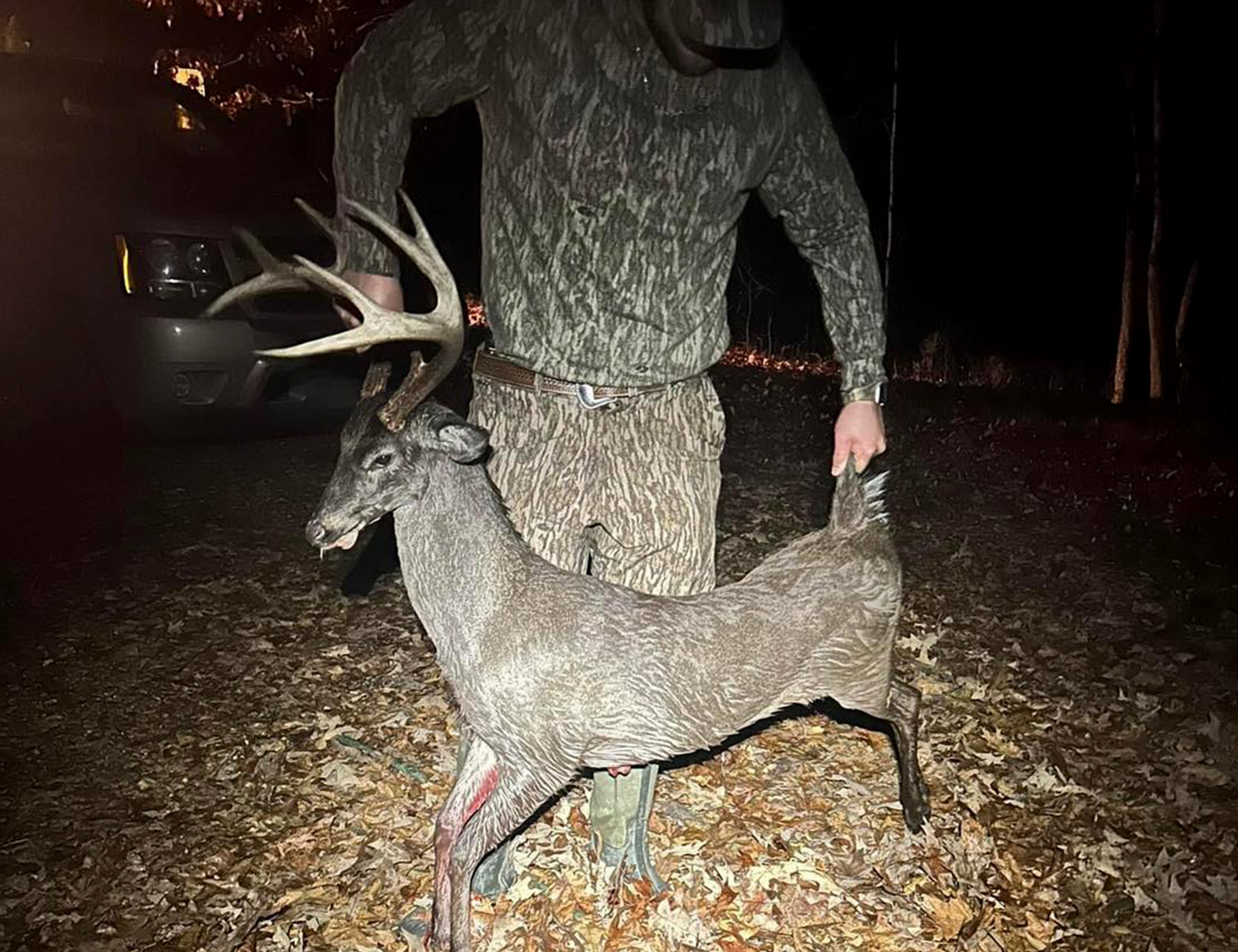Small-bodied whitetails aren’t unusual in the South. It is, however, a rare thing when a buck the size of a Labrador retriever sports a heavy, 10-point rack that scores over 125 inches. And that’s exactly what Mississippi hunter James Keel found in the Delta region on Dec. 16.
“I heard rustling to my right side and saw a doe, and he was chasing her,” Keel told the Clarion Ledger. “When I saw him coming, he was running through the woods. I knew he was a small deer … I said, ‘There’s no way that rack goes with that deer.’”
After shooting the buck, Keel tried to recover it but lost the blood trail after about 250 yards. He called a handler with a tracking dog, and they found the buck that night.
“I was almost in shock at how small of a body he really was,” said Keel, who added that most mature bucks in the Delta region should weigh closer to 200 pounds. “When I held that deer up, [the handler’s] dog was eye-to-eye with it. He was the size of a mature Lab.”
Back at camp, Keel put the buck on a scale where it registered 93.9 pounds. He then took the deer to a local processor, who estimated its age around 3.5 years old. Regardless of its body weight, though, the tiny buck had some legitimately large antlers with 4 4/8-inch bases and main beams longer than 20 inches.
A main-frame 8-point with split G2s, the rack was given a green gross score of 127 3/8 inches, according to the local newspaper. With this score, the buck would qualify for the Mississippi Department of Wildlife, Fisheries & Parks’ Magnolia Records program. (The minimum score for a typical buck in the state’s record book is 125 inches.)
Keel’s miniature whitetail has been referred to as a “dwarf buck,” but it’s unknown if the deer was actually affected by dwarfism or if it was just born smaller than most. There is a phenomenon in wildlife biology known as insular (or island) dwarfism, which is when a population of larger animals evolves to grow smaller because of limits on their range or resources. (Florida’s Key Deer are a perfect example of this.)
Because other hunters in the South have occasionally seen and harvested unnaturally small whitetails like Keel’s over the years, some have speculated that genetics from these unique, insular populations still exist in places like Mississippi, which had its depleted deer herds restocked during the early 20th century. MDWFP chief of staff Russ Walsh told the Clarion Ledger that he doubts this is the case. He said the buck’s small size was more likely the result of an abnormal chromosome.
Read Next: Minnesota Hunter Tags Triple-Beamed ‘Unicorn’ Buck
Keel plans to have a taxidermist do a full-body mount of his dwarf buck to be displayed in a future trophy room in his home.
“I’ve always wanted a house with a hunting room, and it would be a great piece with a story to it,” Keel says. “I don’t think pictures do it justice of how small he really is.”

